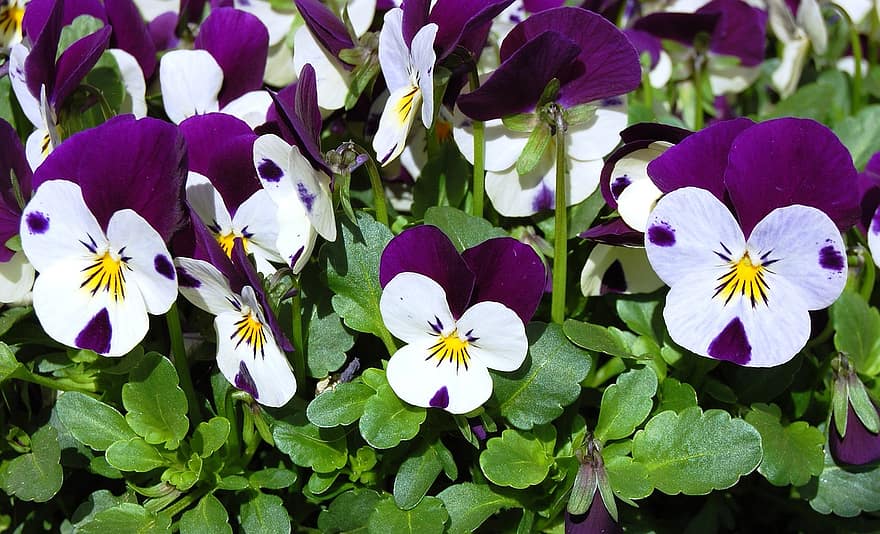Don’t worry about the steps on how to germinate pansy seeds; it’s very straightforward. All you have to do is place the pansy seed on the surface of moist soil and make sure that no light would pass through, as germination would be best in darkness.
You might need to grow pansy seeds indoors first as it takes time to sprout and requires extensive care during its germination state. Additionally, pansies are perfect for newbies since it requires minimal maintenance.

This particular flower often grows during colder seasons and will die during summer so that gardeners would plant pansies during winter or spring. To learn more about pansies, how you can grow and take care of them, specifically how to germinate pansy seeds, then just read on!
Steps In Germinating Pansy Seeds
Did you know that the word “pansy” originated from the French word pensée, meaning “thought”? A flower that symbolizes thinking or thoughts will make you wonder how it grows. In this section, we’ll understand the ways on how to germinate pansy seeds.
#1 Choose an ideal environment for pansies
A kind of plant that prefers cooler weather, pansies are usually planted during spring or fall. An enriched, well-drained soil will make these flowers bloom gracefully as you either place them on sunny or shady areas.
For warmer regions, do place pansies in shaded areas, especially if it’s still seedlings, due to its sensitivity to heat. Do not expose them from the heat of the late afternoon.
#2 Germinating pansies
Germination refers to the growth of a plant contained within a seed, a transition to a seedling. Plant growers need to consider the quality of soil, the amount of sunlight and water each plant to grow healthy and strong.
We advise you to follow these tips to make the pansy seed germinate:
- Bury the seed with soil until it is covered, as it requires darkness for germination
- Covering the pot with black plastic would be a great idea to keep in moisture
- Make sure the soil is damp and moist; keep it that way until seedling sprouts.
- Move the seedlings inside a greenhouse a week before you transfer it to the garden.
#3 Waiting time
Pansies need time to mature. It will take you 10 to 12 weeks for them to complete the germination stage. That is why it would be best to grow your pansy seedlings indoors for you to control all the elements affecting its growth before you place the plant outdoors.
Do the following steps before you plant pansies outdoors. Make sure to plant them 6 to 8 inches apart and water them regularly.
#4 Growing and maintaining pansies
Here are some tips you’d want to follow when caring for pansies:
- remove spent flower heads to make pansies flower more and longer
- cut the plants back and cover the soil with mulch to retain its moisture during the hotter season
- During winter, as the temperature falls below freezing, add straw mulch to give utmost protection to pansies
- Water your plants regularly to maintain its colorful bloom
- Don’t be afraid to put all-purpose fertilizer around your pansies to help them grow (be sure not to use nitrogen-heavy fertilizers)
- remove dead/faded flowers to make your pansies bloom more
Pansies would stop blooming during summer, but as fall returns, they will start to bloom. They can survive extreme and cold weather conditions. However, it is better to place your pansies before the freezing weather comes, preferably in spring.
#5 Sowing pansies outdoors
Even though growing pansy seedlings are better, you can still place pansy seedlings outdoors. If you want to do so, make sure to wait after the last frost or do it mid-summer before sowing it outside. When the temperature is at 65 F. (18 C.), it is preferable for pansy seeds to grow.
However, gardeners on warmer regions might need to sow the seeds during late summer or fall. While for harsher climates, it is best to grow pansy seeds in spring, as the ideal temperature for pansy plants to grow is around 65-75 F. (18-24 C.).
#6 Pests or diseases to look out for
Of course, you’d want to be as healthy as possible. Therefore, knowing what possible pests or disease could destroy your plant will help you take on preventive measures.
Here is a list of pest/disease to look out for in your garden:
- slugs, snails, and aphids
- rust
- gray molds
- mosaic virus
- crown and root rot
- downy or powdery mildew
- spot anthracnose
Slugs are the most common enemy of pansy plants. You can either set-up a slug trap or sprinkle a bit of diatomaceous earth around the plants to prevent them from getting near the flowers.
Conclusion
You’d want to experience how fun gardening is? Then you might want to start growing pansies from seeds. Having to take care of such flowers will help your gardening skills improve. However, you’ll be needing patience, especially when handling the steps on how to germinate pansy seeds.
Always remember these factors to germinate pansy seeds: moist soil, temperature, and darkness. Make sure to supply all of the mentioned factors until seedling sprouts, and then you can transfer it outside to bloom.
Gardening is a hobby that relieves stress and beautifies your home; it can also be income-generating if you sell your crops. Nevertheless, seeing your plants bloom or bear fruit is truly rewarding. Follow this guide on how to germinate pansy seeds to start your garden. Thank you for reading!
